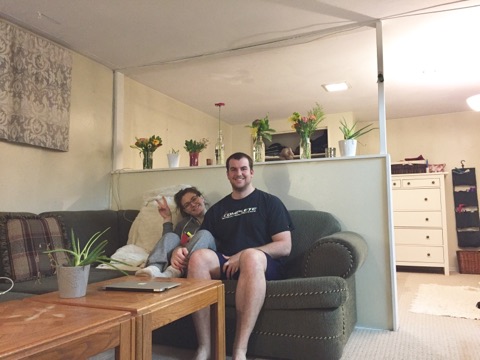By Hayley Kirsh
According to an analysis of data from the City of Ottawa’s monthly service requests, dog barking consistently has the highest number of complaints regarding animals in the city.
The data comes from Ottawa 311, a non-emergency system that allows citizens a fast and easy way to make complaints about issues they’re experiencing in the neighbourhood regarding animals, garbage, noise, and more.
In 2016, dog barking made up one third of the total number of complaints submitted to the system. Between January and October 2017, dog barking still saw the highest number of complaints with a total of 1757 complaints being made.
(The following Ottawa 311 data from 2016 shows the top ten complaints made in regards to animals in the city)
Trina Etmanksie lives in the Gloucester-South Nepean ward just south of Carleton University. This past September, she came home to find a Chihuahua named Chester waiting for her at the front door.
She was so excited that she tried to let him sleep in her bed but after the first night his cries were too much, she says.
The small, brown and white speckled puppy has high and loud levels of energy throughout the day, she says as he jumps around playfully behind her chair. “Now, before bedtime, I try to tire him out by playing with his toys. He loves to chew things,” she says, lifting a pale brown boot in the air. Last week, Etmanskie came home to find her new shoe had tiny teeth marks.

“We’re crate training him, so at night if he’s too loud we’ll throw a blanket over the crate to trick him into sleeping,” she says. “His barking has gotten a little better, but Chihuahua’s are known for their ‘sass’.”
Elise Muchmaker lives in the Alta Vista ward. Two weeks ago she made a call into 311 after a barking dog kept her up until two in the morning. “I heard it before I went to bed at around 11 p.m.,” she says. The barking continued for the next few hours but she was too tired to call in.
Muchmaker said the dog slipped from her mind until later the following day when her daughter said she had also heard it in the early morning. “I’ve owned a dog all my life and if they’re barking that much, something’s wrong,” says Muchmaker.
Muchmaker then dialed 311, “Come to think of it, I haven’t heard the dog since,” she says.
She says she is happy with how fast the City responded to the situation, evident by the lack of barking she hears now.
According to the City of Ottawa website, after a complaint is made an officer is sent to examine. A courtesy warning is often issued first but continued violations may result in fines or court proceedings.
All animal-related issues are under the Animal Care and Control By-Law. The by-law specifically states that, “No person shall keep, own, or harbour in the City any animal which makes or causes noises that disturb or are likely to disturb the peace, quiet, rest, enjoyment, or comfort of any person in the vicinity or the neighbourhood.”
Kevin Burns has been a dog trainer for the past 37 years and says the best way to deal with a barking dog is to ignore them.
A big issue he finds with his clients and dog owners in general is that they think all dogs want to be leaders. The barking is them acting out to protect their property, he says, “In truth, the owners need to act as the leaders. Once the dog sees you’re not afraid then they won’t be.”
In his training Burns emphasizes, “It’s about changing the dog’s brain and then their behaviour will follow.”


